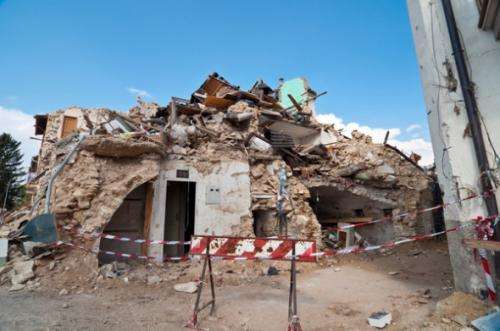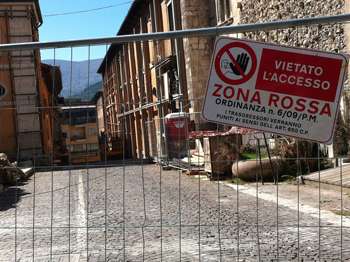From a devastating earthquake, a blueprint for recovery

In 2009, a massive earthquake struck L'Aquila, Italy, a town two hours north of Rome where generations of families have lived for thousands of years. The quake devastated the community so much that its citizens have not been able to return; anyone crossing into the city must wear protective gear and be accompanied by emergency personnel.
"It looks like a war zone of the worst kind," said Matthias Ruth, a professor with dual appointments in the School of Public Policy and Urban Affairs and the Department of Civil and Environmental Engineering.
Ruth is part of a team of about 20 researchers from the Organisation for Economic Cooperation and Development that has studied the aftermath of the Italian earthquake in hopes of teaching other cities how to improve their resilience to major disasters. The research team released a report of their recommendations, "Building Resilient Regions after a National Disaster," in Rome earlier this month.
"We need to prepare ourselves," Ruth said. "That's the intellectual question we have to face: When we rebuild, how do we do that considering the next disaster? Now that we are given the opportunity to rethink and rebuild, how do we do this in a smarter way?"

Planners, engineers, and government officials in L'Aquila have begun rebuilding the ravaged city, Ruth said. They are looking at how to balance its existing nature—a quintessentially Italian community of winding streets, sidewalk cafes, and close quarters—with the needs of a modern city to allow for both resilience against future disasters and an infrastructure that can support a new generation of entrepreneurs and innovation. Some structures will simply not be rebuilt; others may look the same but will be built using entirely new methods and materials.
"The big question is, 'How do we use technology to continue to give the feel of an old city with its own charm and recreate the social fabric and some kind of authenticity, while also incorporating modern materials, sensors, and information technology to make the city a safer place?'" Ruth said. These issues, he said, represent the key challenges facing urban resilience projects, and they align with the larger debate of designing sustainable cities that can evolve with both environmental and social changes.
Ruth said lessons learned in L'Aquila—gathered from more than 400 in-person interviews and intensive landscape surveys and assessments—can be applied to cities in places like New York, New Jersey, and Connecticut, all of which were battered by superstorm Sandy. In a sign that Ruth's report has had far-reaching effect, some officials have announced that destroyed waterfront structures will either not be rebuilt or, in cases like beachfront boardwalks, will be rebuilt out of concrete, not wood like the previous structures.
"This is not just about Italy," Ruth said. "This is really a piece of the groundwork to be laid for cities all around the world."
Provided by Northeastern University

















